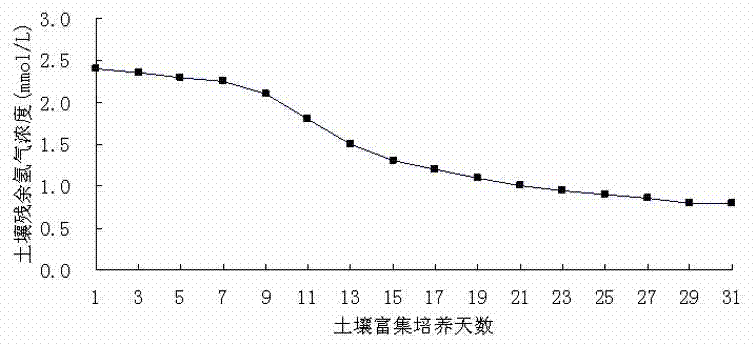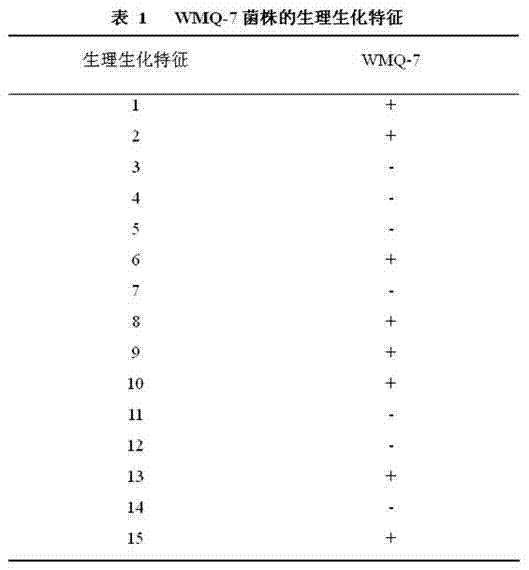Hydrogen oxidizing bacteria wmq-7 and its isolation method and application
A WMQ-7, hydrogen oxidizing technology, applied in the fields of biochemical equipment and methods, bacteria, microorganism-based methods, etc., can solve the problem of not being widely popularized and applied
- Summary
- Abstract
- Description
- Claims
- Application Information
AI Technical Summary
Problems solved by technology
Method used
Image
Examples
Embodiment 1
[0073] Isolation of soil microorganism WMQ-7
[0074] 1. Sample collection: Collect vigorously growing HUP by conventional methods - Nodulated alfalfa rhizosphere (≤5 mm) soil.
[0075] 2. Soil enrichment: After the collected rhizosphere soil is sieved with a 16-mesh sieve, it is mixed with sterilized quartz sand (soil: quartz sand = 2:1) to prevent compaction. Put 60 mL of mixed soil into a glass tube (2.5 × 60 cm) with both ends closed, and then connect the three glass tubes in series. H is produced by electrolysis of water 2 , forming a flow rate of 280 mL / min, H 2 The content is 4.16×10 -4 -2.42×10 -3 mol / L mixed gas to enrich the hydrogen oxidizing bacteria in the soil. Similarly, 3 glass tubes connected in series were filled with 60 mL of mixed soil, and the group of soil samples was continuously ventilated with air as a control. Every 2 days, the gas chromatographic detection of the gas outlet V of the culture device 2 and V 4 H 2 content, make the hydr...
Embodiment 2
[0081] Example 2 hydrogen oxidizing bacteria Plant growth promoting effect of WMQ-7
PUM
 Login to View More
Login to View More Abstract
Description
Claims
Application Information
 Login to View More
Login to View More - R&D
- Intellectual Property
- Life Sciences
- Materials
- Tech Scout
- Unparalleled Data Quality
- Higher Quality Content
- 60% Fewer Hallucinations
Browse by: Latest US Patents, China's latest patents, Technical Efficacy Thesaurus, Application Domain, Technology Topic, Popular Technical Reports.
© 2025 PatSnap. All rights reserved.Legal|Privacy policy|Modern Slavery Act Transparency Statement|Sitemap|About US| Contact US: help@patsnap.com



